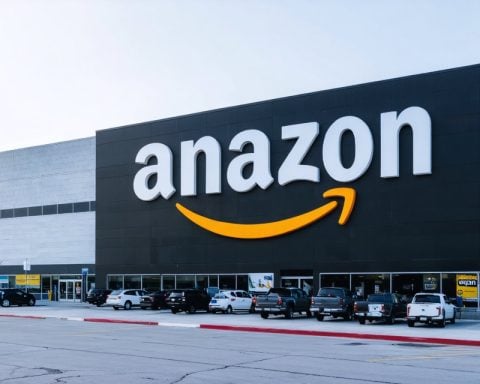- Coca-Cola’s strategic price adjustments led to a 14% surge in organic revenue, highlighting its pricing power.
- Key markets like the U.S., China, and Brazil saw increased demand, with Coca-Cola Zero Sugar unit volumes rising by 13%.
- Price and mix adjustments contributed to an 11% increase in revenues, with significant gains in North America.
- Latin America experienced a 23% price rise, while Asia Pacific showed 6% volume growth despite price sensitivity.
- Coca-Cola’s Q4 revenue reached $11.54 billion, exceeding expectations, with strong adjusted earnings per share.
- The company forecasts 5% to 6% organic growth through 2025, focusing on health-conscious products like Fairlife milk.
- Despite challenges such as aluminum tariffs, Coca-Cola’s adaptability and brand strength suggest continued success.
As the fizz settles from Coca-Cola’s most recent earnings report, a clear narrative emerges: pricing power reigns supreme. The iconic brand’s strategic price adjustments, married with a thirst for premium products, fueled an impressive 14% surge in organic revenue. In a world brimming with competition, Coca-Cola’s dominance continues to sparkle.
Picture bustling markets in the U.S., China, and Brazil, where Coca-Cola Zero Sugar dazzled with a 13% rise in unit volumes. The North American scene unfolded much like a symphony of taste, with noteworthy performances from the flagship Coke, Fairlife protein shakes, and seasonal sensations like Sprite winter spiced cranberry. But it wasn’t just the volume; the melody of price and mix adjustments crescendoed by 11%, amplifying revenues.
In the vibrant landscapes of Latin America, prices soared by 23% amid the rhythmic pulse of inflation in Argentina. Contrast this with Asia Pacific, where price sensitivity led customers to opt for simpler offerings. Yet, even here, volume growth danced to the beat, rising 6%.
With $11.54 billion in Q4 revenue far surpassing expectations, Coke’s financial health gleams robustly. Adjusted earnings per share topped charts, delighting stakeholders. Coca-Cola’s playbook for 2025 outlines further anticipation, with organic growth forecasts of 5% to 6%.
As rivals watch, Coca-Cola remains an artist of reinvention, adapting to new consumer beats. Fairlife’s ultra-filtered milk, rich in protein and low in sugar, heralds the company’s move into health-conscious markets—a trend amplified by the popularity of GLP-1 weight loss drugs.
Facing headwinds like aluminum tariffs, Coca-Cola’s adaptive prowess suggests it can navigate the challenges. For investors with patience, this beverage giant’s enduring brand equity and forward-thinking strategies offer a promising tonic for future gains.
Unlocking Coca-Cola’s Secrets: How Pricing Power and Premium Products Drive Success
How-To Steps & Life Hacks for Investors
If you’re an investor looking to capitalize on Coca-Cola’s strategic success, here are some actionable steps and life hacks you can apply:
1. Monitor Trend Patterns: Keep a close eye on Coca-Cola’s quarterly earnings reports. Look for consistency in revenue growth driven by pricing power and volume increases in key markets like North America and emerging regions.
2. Track New Product Launches: Focus on products like Coca-Cola Zero Sugar and niche items such as Fairlife protein shakes that appeal to health-conscious consumers. These products are often indicators of Coca-Cola’s success in adapting to current consumer trends.
3. Diversify with Leaders: Consider diversifying your investment portfolio with other leading consumer goods companies that have a track record for innovation and growth in essential goods sectors.
Real-World Use Cases
1. Retail Strategies: Retailers can leverage Coca-Cola’s success by optimizing product placement for best-sellers like Coke Zero and Fairlife in their stores.
2. Hospitality Industry: Restaurants and bars can capitalize on seasonal Coca-Cola products, such as flavored sodas, to differentiate their beverage menu and attract more customers.
Market Forecasts & Industry Trends
Coca-Cola’s financial health and strategic foresight suggest the continuation of solid performance in the beverage industry. Here are some key industry trends that support this:
– Growth in Premium and Healthy Options: The demand for premium beverages and health-focused products is rising. Coca-Cola’s push into products like Fairlife aligns with this trend.
– Sustainability and Ethical Sourcing: Consumers increasingly favor brands prioritizing sustainability. Coca-Cola’s initiatives in sustainable packaging and ethical sourcing will likely bolster its image and sales.
Reviews & Comparisons
Coca-Cola vs. PepsiCo:
– Coca-Cola: Known for its pricing power and strategic innovations, focuses on premium and health-conscious products.
– PepsiCo: Prides itself on a wider range of beverage and snack options but may face challenges in matching Coca-Cola’s brand loyalty.
Controversies & Limitations
– Health Concerns: Despite success with health-focused products, sugary drinks can still raise health concerns which may affect sales and require proactive consumer education.
– Economic Sensitivity: Coca-Cola’s reliance on premium pricing strategies may face limitations in economically sensitive regions where consumers might opt for cheaper brands.
Features, Specs & Pricing
Coca-Cola is known for its diverse product range which includes:
– Coca-Cola Zero Sugar: Combines the classic taste with zero sugar.
– Fairlife Milk: Offers high protein, low sugar milk options, tapping into the health-conscious consumer base.
Security & Sustainability Insights
– Packaging Innovations: Coca-Cola continues to innovate with sustainable packaging initiatives to reduce plastic use, integral to future-proofing against environmental challenges.
– Supply Chain Resilience: With global sourcing, the company faces tariff pressures, yet its adaptive supply chain remains pivotal to overcoming such hurdles.
Pros & Cons Overview
Pros:
– Strong brand equity and consumer loyalty.
– Successful adaptation to health trends.
– Consistent innovation in product offerings.
Cons:
– Health controversies regarding sugary drinks.
– Sensitivity to global economic shifts and raw material prices.
Actionable Recommendations
– Stay Informed: Regularly read financial news and reports to track Coca-Cola’s strategic moves and market performance.
– Leverage Seasonal Products: Retailers should promote seasonal offerings for immediate consumer engagement.
– Diversify Portfolio: While investing in Coca-Cola, balance with other sectors to mitigate risk.
Coca-Cola’s resilience and strategic insights offer valuable lessons for investors and businesses alike. Embracing innovation while navigating global economic shifts ensures it remains a dominant force in the beverage industry. For more insights on Coca-Cola’s corporate strategies and upcoming industry trends, visit the Coca-Cola Company.























